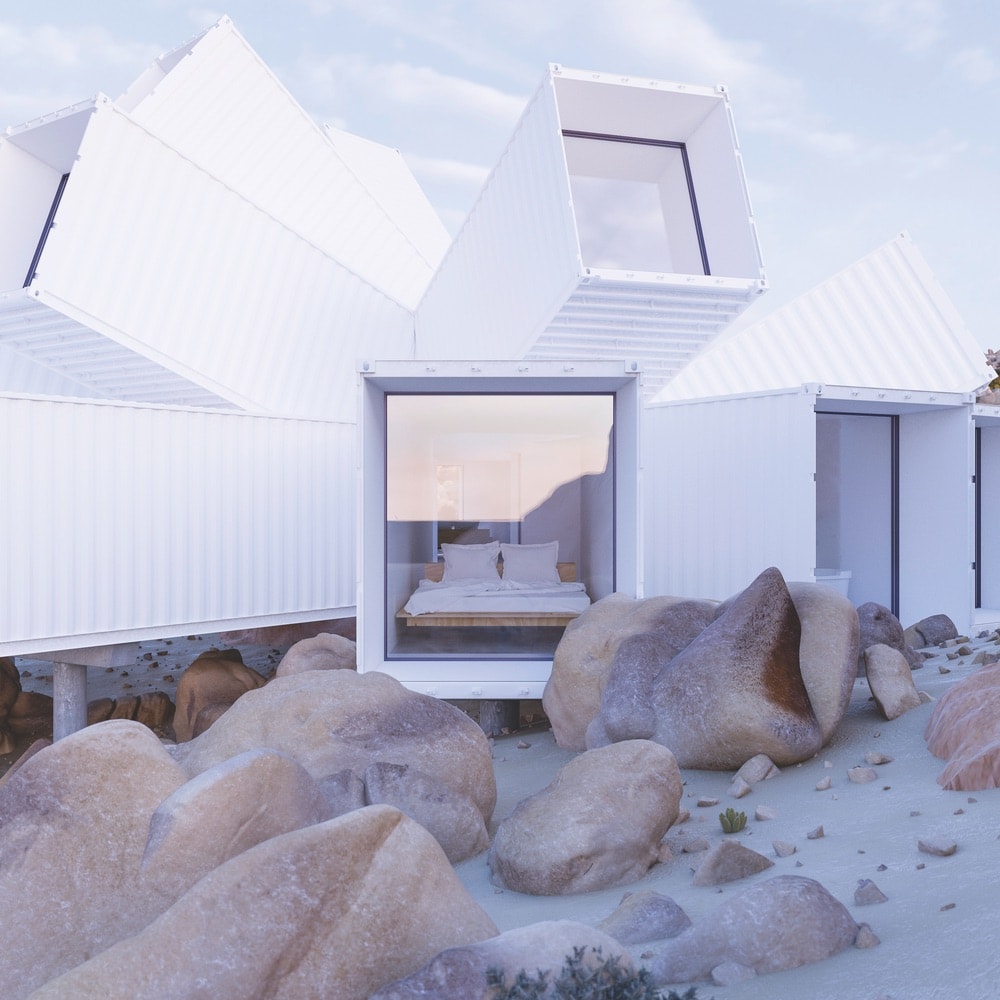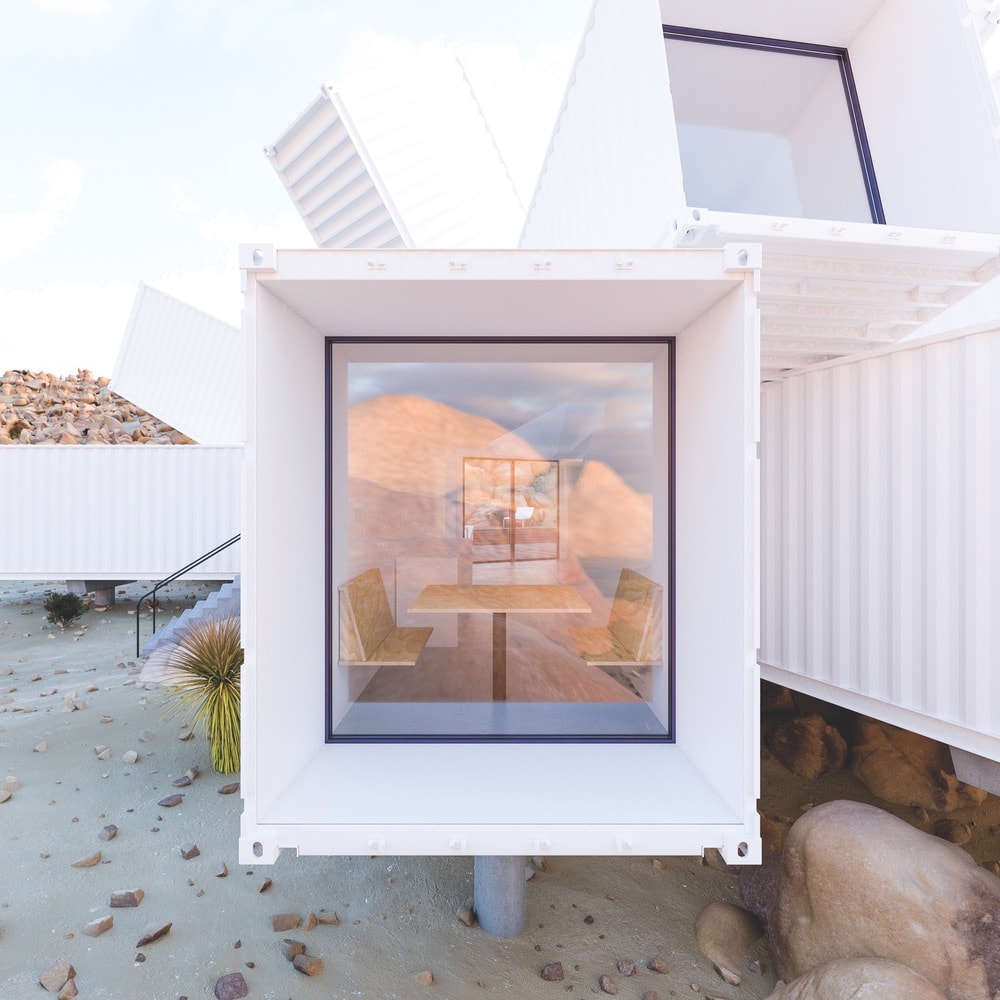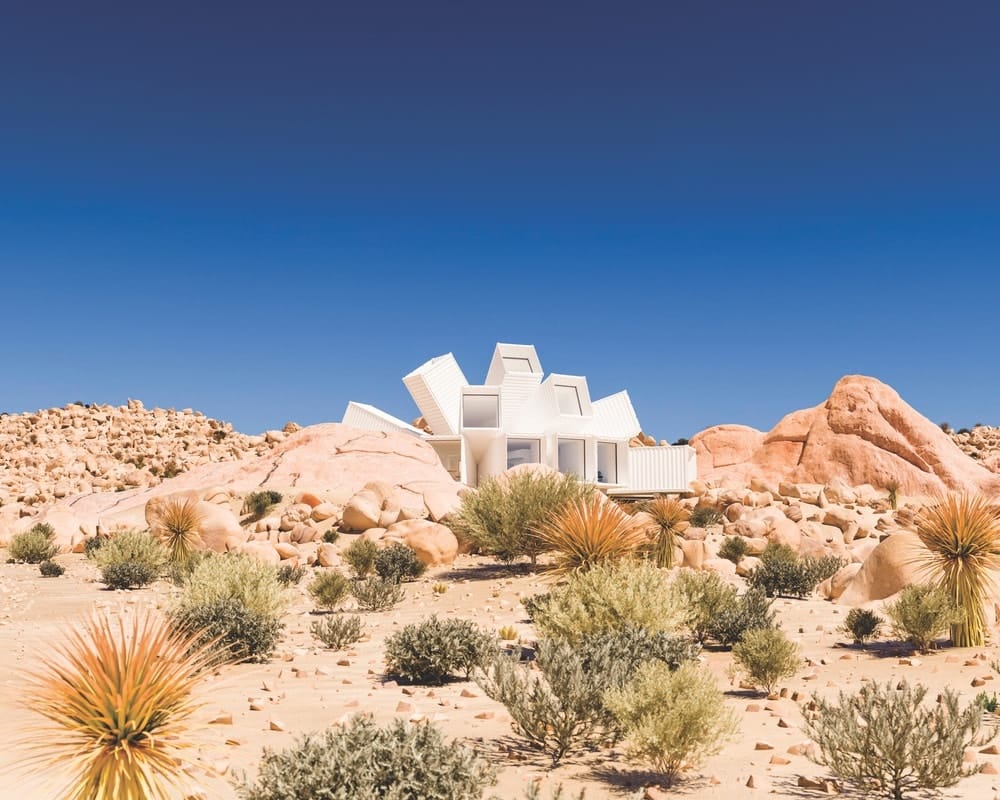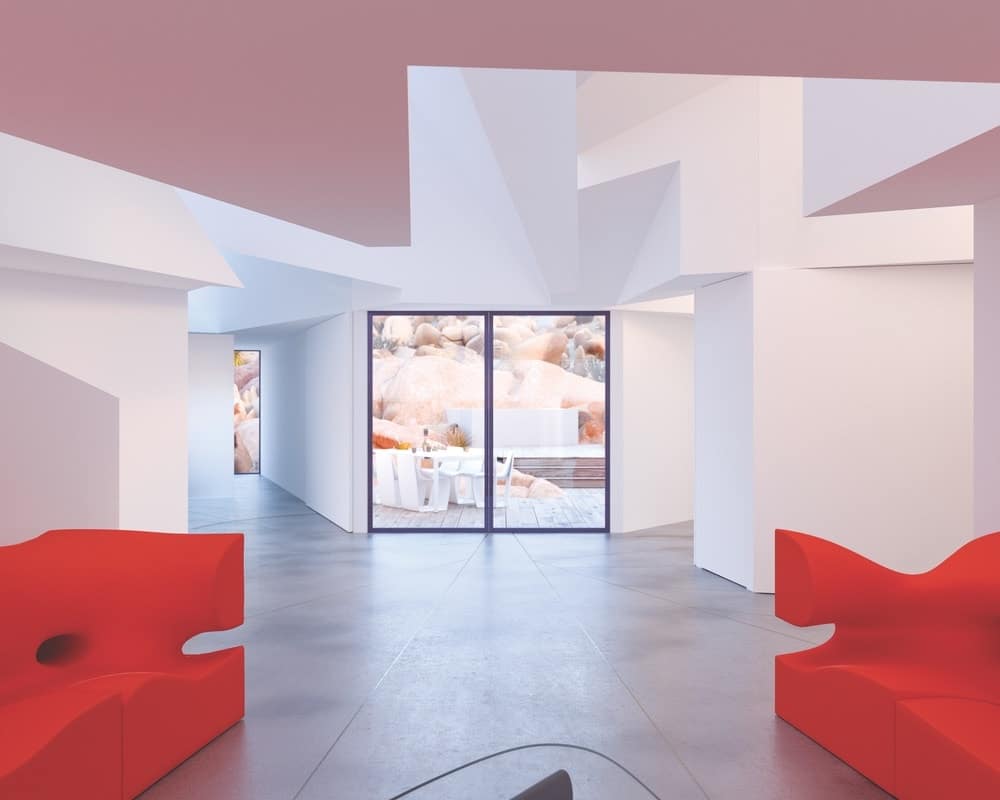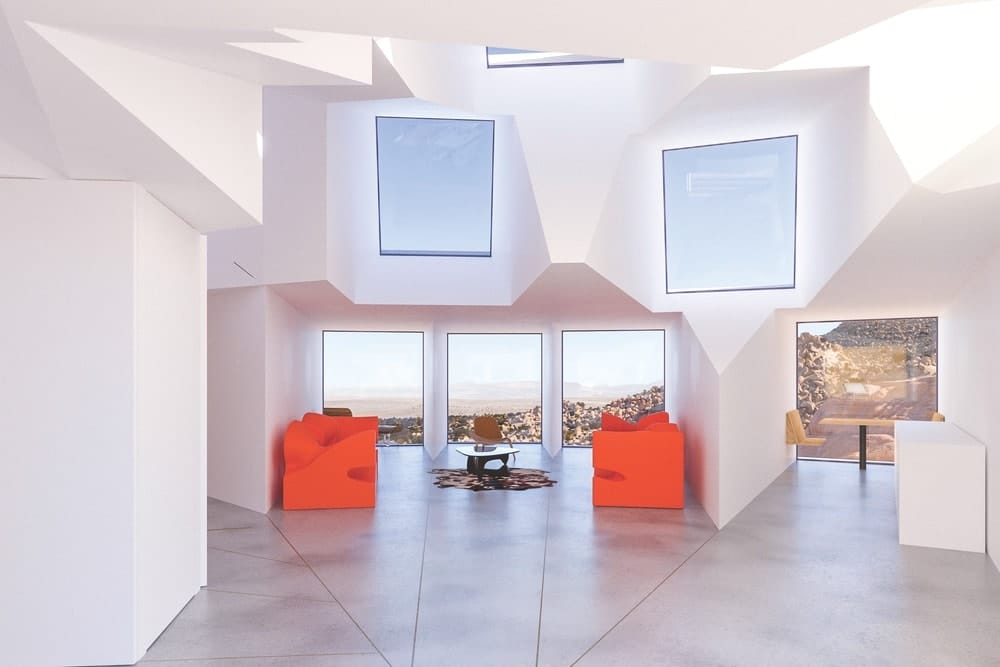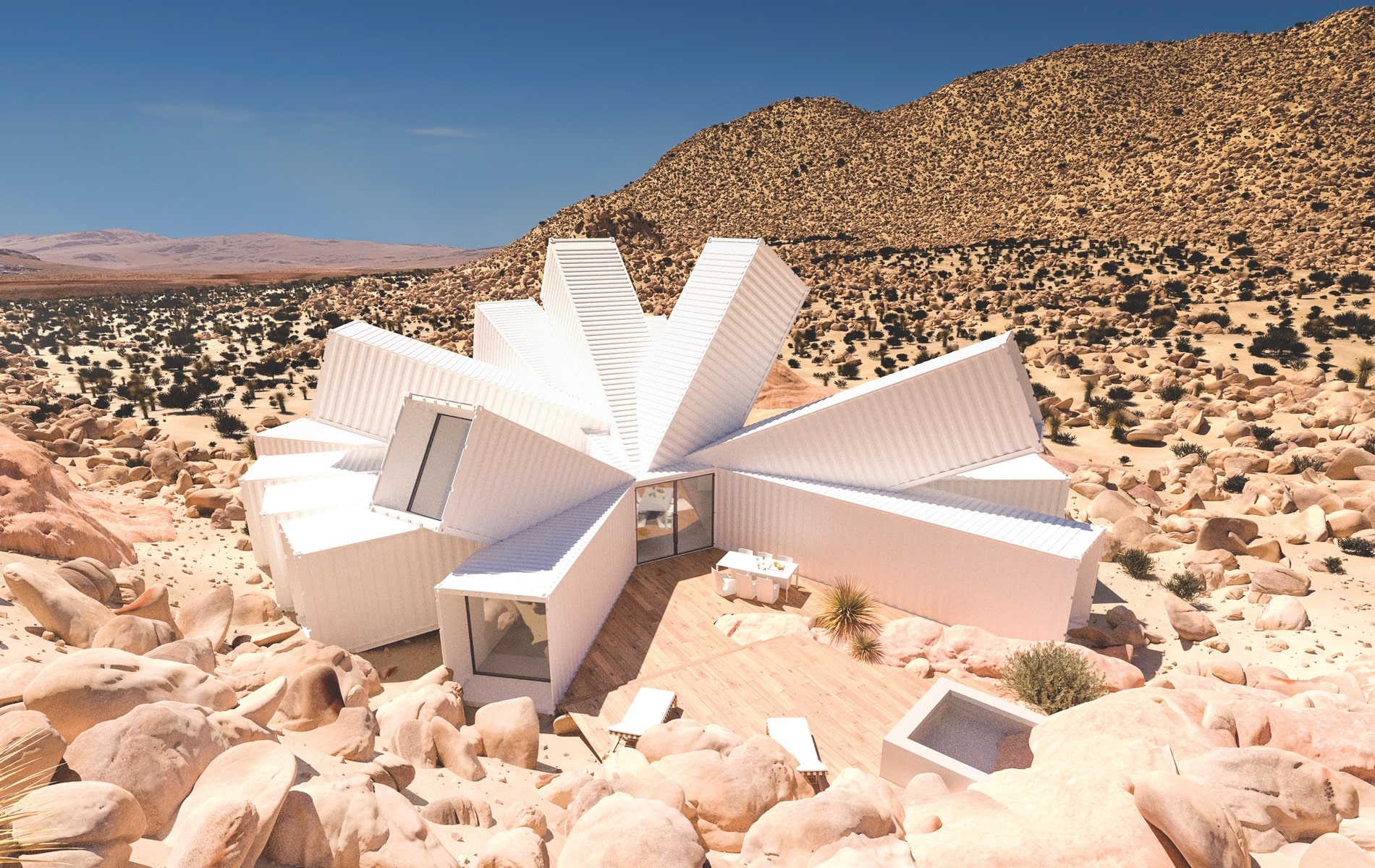
vie-magazine-whitaker-studio-joshua-tree-container-home-hero-min
The Joshua Tree Residence, a shipping container home design created by Whitaker Studio, was first conceptualized in 2017.
Desert Flower
A Container House Blooms in Joshua Tree
By Gerald Burwell and Jordan Staggs | Renderings courtesy of Whitaker Studio
The metal shipping container: dimensionally constant, strong, and watertight. These features were the catalyst behind Malcolm McLean’s drive in 1956 to perfect and patent a standardized container that could be employed by all three major freight methods—shipping, rail, and trucking—which ultimately revolutionized manufacturing on a global scale. Within a matter of years, the very same characteristics of the metal container that made it ideal for shipping were equally appealing to the designers of habitable structures. An array of designs has been suggested ranging from mobile exhibition booths and offices to permanent homes, apartments, and even swimming pools.
In recent decades, the subject of sustainability has become an ever-growing concern with populations worldwide. With a global housing shortage on the rise, the building industry has been working toward solutions for the reduction of waste in terms of construction methodologies, materials, labor, and energy usage. As the need for sustainability escalates, the humble shipping container has become a source of inspiration for many. A couple of years ago, London architect James Whitaker took that one step further when designing what he calls the Joshua Tree Residence. Its fourteen stark white shipping containers are connected and arranged in what looks like a lotus blossom emerging from the scrub-covered Mojave Desert just three hours outside of Los Angeles.
Whitaker’s client is a film producer “with a background in nurturing creative projects into fruition—so, [he is,] in many ways, the dream collaborator,” the architect says.
- The angles of the containers and the large windows are designed to maximize light exposure and keep the home cooler during the day while also providing spectacular views.
In the spring of 2017, that client and some friends took a road trip to visit a plot of land he owned near Joshua Tree National Park. “Whilst there, among the arid landscape and jutting rocks,” Whitaker continues, “one of the friends said, ‘You know what would look great here?’ before opening her laptop to show everyone a picture she’d seen on the internet.” It was a picture of an office that Whitaker had designed several years before but was never built. Similar in design, the container office was originally proposed for an advertising agency in Hechingen, Germany, but the business closed before the space was ever realized. Still, the Hollywood producer was intrigued. “And so,” Whitaker says, “it came to pass that next time the client was in London, he got in touch and asked to meet up.”
The home is just over 2,150 square feet, with three en suite bedrooms, a kitchen, a living room, and a private outdoor deck. “Each container is orientated to maximize views across the landscape.”
Thus, the concept for Joshua Tree Residence was born. As seen in Whitaker’s artistic renderings, the home is just over 2,150 square feet, with three en suite bedrooms, a kitchen, a living room, and a private outdoor deck. “Each container is orientated to maximize views across the landscape or to use the topography to provide privacy,” says Whitaker. His design also includes a nearby carport with solar panels atop the roof that provide power for the house. Thanks to the architect’s background in animation and multimedia, Whitaker’s skillful and hyperrealistic renderings, first released in 2017, received rave reviews worldwide.
- The home’s fourteen shipping containers meld to create a flower-like shape amid the desert landscape.
- A private deck area is designed for the “backyard” and includes a hot tub.
- Architect James Whitaker’s photorealistic renderings have made waves in the design world. They even include finishes and furnishings, like seating from the Misfits line by Ron Arad.
“The path that has led me here has often diverged from straight architectural practice, and I’ve worked with photography, digital artistry, and filmmaking,” Whitaker says on his website. “This love of the eclectic has broadened the way I view the world and provided me with a constantly growing set of tools for approaching new projects. Where the Whitaker Studio path goes next, I do not know, but I do know that we will continue working to make tomorrow’s work even greater than yesterday’s and enjoy every minute of the process.”
“This love of the eclectic has broadened the way I view the world and provided me with a constantly growing set of tools for approaching new projects.”
Following the release of the Joshua Tree Residence concept, Whitaker responded to requests for an ideal container house that could be reproduced for almost any setting. The resulting design was a new living concept, the Anywhere House—not made of shipping containers, but of prefabricated modular pieces with multiple configuration options. Whitaker Studio hopes to build the first of these homes in Canada later this year.
— V —
Visit WhitakerStudio.co.uk to learn more or see more projects.
Share This Story!
KEEP UP WITH THE LATEST STORIES FROM VIE



